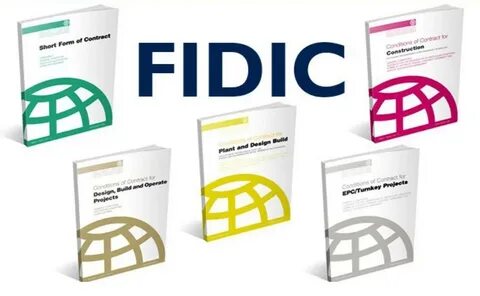
FIDIC Construction Contracts
FIDIC Construction Contracts In the world of construction and engineering, effective contract management is crucial for project success, particularly when it involves complex projects spanning multiple jurisdictions, cultures, and regulations. The FIDIC (Fédération Internationale des Ingénieurs-Conseils) suite of contracts, commonly known as the “Rainbow Suite” (including the Red, Yellow, and Silver Books), is one of the most widely used and trusted frameworks in global construction projects. The FIDIC contracts are designed to provide a standardized, balanced approach to managing large-scale construction projects, with an emphasis on risk allocation, clear responsibilities for all parties, and mechanisms for dispute resolution. These contracts offer a reliable framework for addressing issues ranging from delays and unexpected conditions to cost overruns, making them a preferred choice for international construction projects. In this blog, we will delve into the details of FIDIC construction contracts, exploring live examples and case studies, as well as discussing strategies, trends, and the challenges associated with their use. Live Examples of FIDIC Contracts in Action 1. Case Study: Managing Unforeseen Conditions in Tunnel Construction Scenario: A tunnel construction project faced significant unforeseen geological risks, including the discovery of unstable soil and groundwater conditions that had not been identified during the site survey. Risk Identified: The contractor discovered that the soil conditions were far worse than expected, requiring extra excavation and the use of specialized machinery to stabilize the site. FIDIC Solution: Under FIDIC’s Clause 4.12 (Unforeseen Conditions), the contractor notified the employer and the engineer of the conditions. The contract allowed for an adjustment in both time and cost. This provision helped protect the contractor from bearing the full cost of the unexpected conditions while providing the employer with clear communication regarding the impact on the project timeline and cost. Outcome: The project was delayed by several months, but the risks were effectively mitigated through the contract’s provisions. The contractor was compensated for the additional costs and a time extension was granted. The employer acknowledged the unforeseen conditions and both parties continued to collaborate on finding a solution. 2. Case Study: Managing Time Extensions Due to Force Majeure Scenario: A construction project was delayed due to an unforeseen natural disaster, in this case, a major flood that disrupted the construction site and affected transportation routes for material supplies. Risk Identified: The contractor faced unexpected delays caused by force majeure events such as floods and extreme weather conditions that hindered both work progress and material delivery. FIDIC Solution: According to Clause 19 (Force Majeure) of the FIDIC contract, the contractor was entitled to request an extension of time for completion. The contractor provided documentation and evidence of the disaster and requested a delay extension due to the uncontrollable event. Outcome: After reviewing the contractor’s evidence, the engineer granted a reasonable extension of time without penalties. This allowed the contractor to resume work once the weather cleared, and the project was completed with minimal additional costs. Pros and Cons of FIDIC Construction Contracts Pros of FIDIC Construction Contracts Pros Details Standardized Framework FIDIC contracts provide a globally recognized and standardized framework that simplifies contract negotiation, especially for international projects. Balanced Risk Allocation Risk is fairly allocated between the employer and contractor, with clear guidelines on managing unforeseen risks, cost overruns, and delays. Dispute Resolution Mechanisms FIDIC includes well-established methods for dispute resolution, such as adjudication and arbitration, ensuring efficient resolution of conflicts. Clear Contractual Obligations FIDIC contracts clearly define the roles and responsibilities of the parties, ensuring transparency and accountability throughout the project. Adaptable to Various Project Types FIDIC offers different books (e.g., Red Book, Yellow Book, Silver Book) designed to cater to specific project types such as construction, design-build, and EPC contracts. Cons of FIDIC Construction Contracts Cons Details Complexity FIDIC contracts are detailed and complex, which can be overwhelming for parties without legal or contractual expertise. Rigidity While the standard clauses work well for many projects, FIDIC contracts may not accommodate all unique project needs without modification or negotiation of specific terms. Legal Complexity in Different Jurisdictions Some clauses in FIDIC may not align well with local laws or regulations, requiring adaptation or legal advice, especially in international contracts. Potential for High Legal Costs Disputes that go to adjudication or arbitration can result in high legal and administrative costs for both parties. Best Strategies for FIDIC Contract Management and Administration 1. Proactive Risk Assessment and Mitigation Effective risk management is crucial when handling large projects. Prior to project initiation, a comprehensive risk assessment should be conducted, including detailed site surveys, feasibility studies, and geotechnical investigations. Early identification of potential risks, such as geological challenges or logistical issues, can help in developing mitigation strategies. Example: For a large infrastructure project, ensuring that insurance policies, such as contractor’s all-risk insurance and third-party liability insurance, are in place helps mitigate the financial impact of unforeseen events. 2. Regular Monitoring and Reporting Regular monitoring and reporting of project progress is essential for ensuring that the project stays on track. Implementing a performance reporting system that tracks key milestones, financial expenditures, and timelines is vital. Regular updates should be provided to all stakeholders to ensure transparency and to prevent misunderstandings. 3. Collaborative Approach to Change Management Managing changes effectively is one of the most important aspects of FIDIC contract administration. Having a change management protocol in place ensures that variations to the contract scope, costs, or schedule are handled professionally. This includes obtaining the required approvals from the client and keeping records of all variations. Example: For a building project, if the client requests additional rooms or structural changes, the Engineer plays a key role in assessing the impact of those changes on the project schedule and costs. 4. Use of Technology and Digital Tools Leveraging digital tools such as Building Information Modeling (BIM) and Contract Management Software helps streamline FIDIC contract administration by improving communication, documentation, and tracking. For example, BIM can help visualize potential issues in the project design before construction starts, reducing the risk of costly revisions. Future Trends in FIDIC Construction









